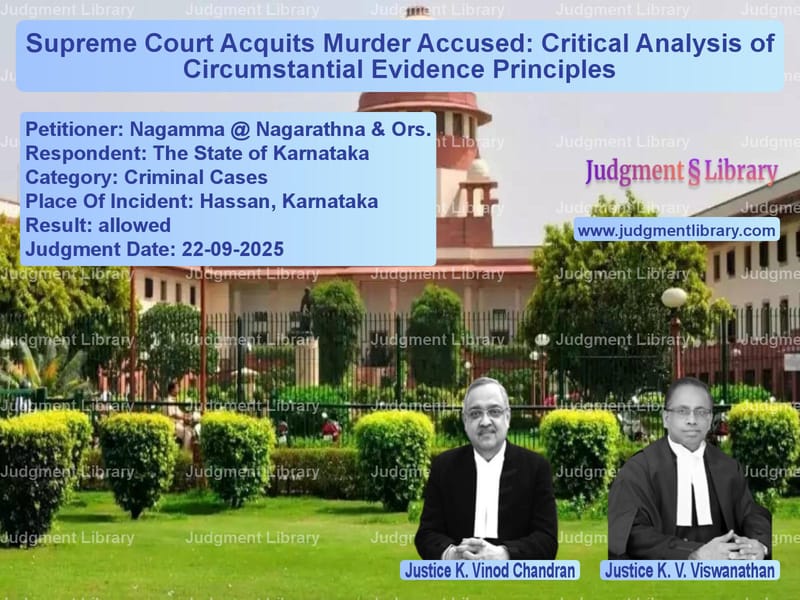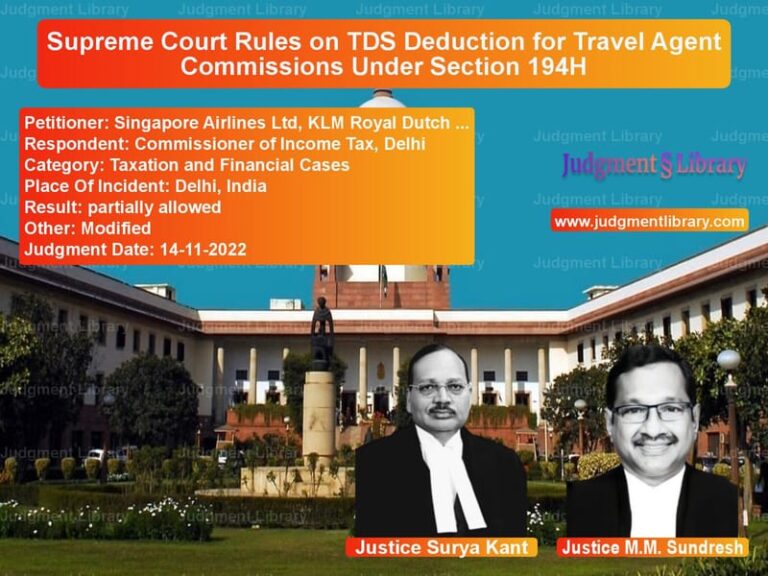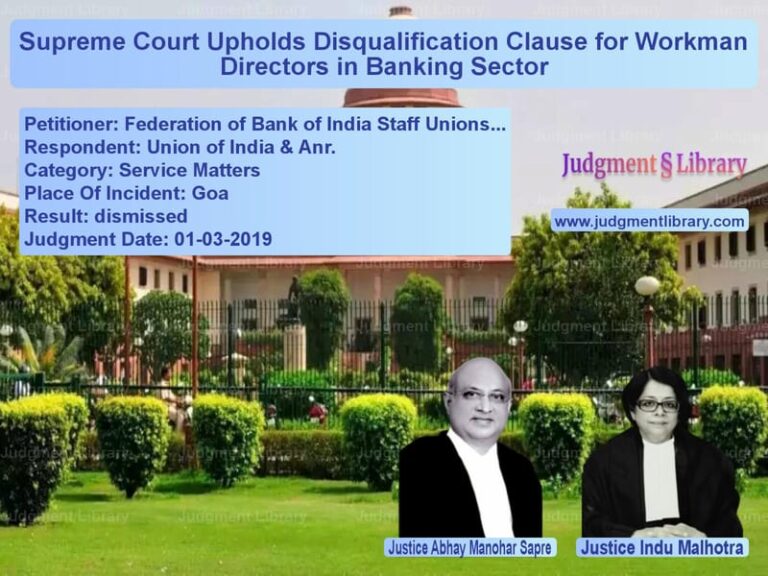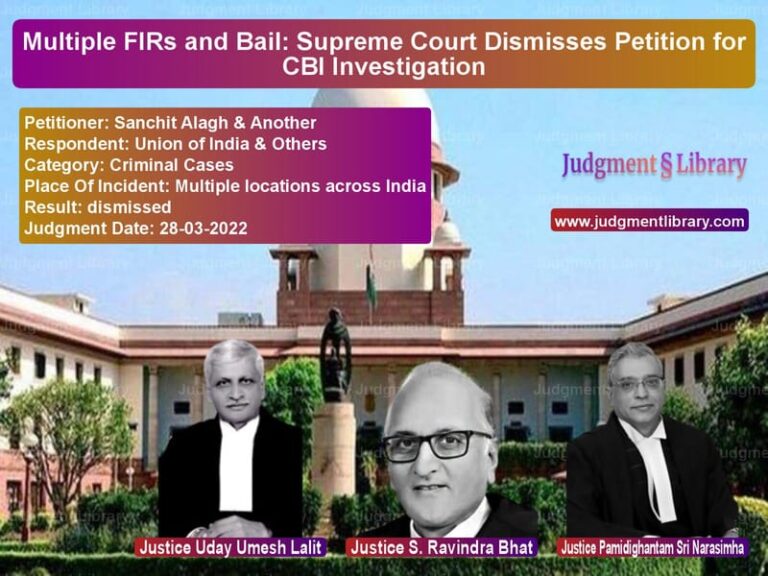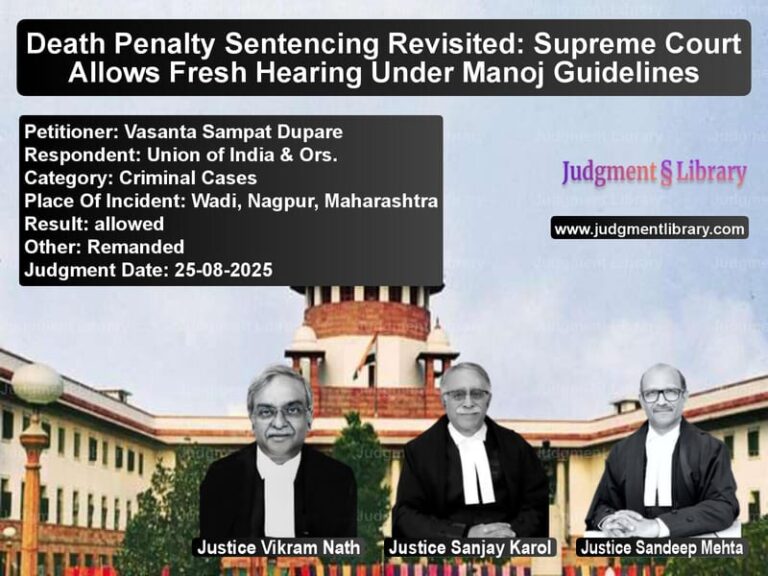Supreme Court Acquits Murder Accused: Critical Analysis of Circumstantial Evidence Principles
In a landmark judgment that underscores the fundamental principles of criminal jurisprudence, the Supreme Court of India recently acquitted three individuals accused of a brutal murder, highlighting critical flaws in the prosecution’s case based on circumstantial evidence. The case, which had traveled through multiple courts over nearly two decades, finally reached its conclusion with the apex court emphasizing that suspicion, however grave, cannot substitute for legal proof in criminal trials.
The case originated from a tragic incident that occurred on March 10-11, 2006, involving the murder of a police driver in Karnataka. The prosecution alleged that the murder was orchestrated by another police constable (A1) who had taken a loan of Rs. 1 lakh from the deceased and was unable to repay it. According to the prosecution, A1’s wife (A2) lured the deceased to their home under the pretext of repaying the loan, where he was allegedly attacked with chili powder and hacked to death with choppers by A2, her brother (A3), and brother-in-law (A4).
The Legal Battle Through Lower Courts
The trial court had convicted A2 to A4 under Section 302 read with Section 34 of the Indian Penal Code and sentenced them to life imprisonment, while acquitting A1 due to lack of evidence of instigation and his established alibi of being on night duty at another police station. The High Court later affirmed the conviction of A2 to A4, leading to their appeal before the Supreme Court.
Read also: https://judgmentlibrary.com/supreme-court-quashes-rape-case-citing-vengeful-motive-and-legal-malice/
Before the Supreme Court, Mr. C.B. Gururaj, learned counsel for the appellants, argued that “since Section 302 is charged against four accused read with Section 34, when one of the accused is acquitted, it should inure to the benefit of the others also.” He relied on precedents including State of West Bengal v. Vindu Lachmandas Sakhrani alias Deru and Suraj Pal v. State of Uttar Pradesh.
Mr. Nishanth Patil, learned AAG for the respondent State, vehemently defended the conviction, arguing that “the dead body was found in the house of A2, which was pointed out by her and there was no explanation even under Section 313 questioning. The motive was proved, and the extra judicial confessions further established the crime. The recovery as against A4 also provided a link in the chain of circumstances, which chain is complete.”
Supreme Court’s Critical Analysis
The Supreme Court, comprising Justices K. Vinod Chandran and K.V. Viswanathan, meticulously examined each piece of evidence and found multiple fatal flaws in the prosecution’s case.
On the question of motive, the Court found the evidence completely unreliable. The witnesses presented to prove the financial transaction between A1 and the deceased either turned hostile or provided contradictory statements. PW-18, the wife of the deceased, initially supported the prosecution but later resiled from her statement. The Court observed that “Absence of motive is not an imperative circumstance to arrive at a conviction, in a case where there is ocular evidence. The role of motive is not very significant even when circumstances otherwise form an unbreakable chain. Motive only provides another link, and the absence of motive is a factor that weighs in favour of the accused.”
The Court made a crucial observation about the presence of the dead body at the accused’s house, noting that “there is no general presumption against the owner/tenant of a property with regard to his/her guilt if a dead body with homicidal injuries is found in his/her property. No doubt if the prosecution succeeds in proving a chain of circumstances from which a reasonable inference can be drawn regarding one’s guilt then, in absence of proper explanation, the court can always draw an appropriate conclusion with respect to his/her guilt with the aid of Section 106 of Evidence Act, 1872. But, if the chain of circumstances is not established, mere failure of the accused to offer an explanation is not sufficient to hold him guilty.”
Flawed Extra-Judicial Confessions
The Court completely rejected the extra-judicial confessions relied upon by the prosecution, noting that all such confessions were made within the police station. The Court emphasized that “Section 25 of the Evidence Act mandates that no confession made to a police officer shall be proved as against a person accused of any offence and Section 26 also restricts any confession by a person in the custody of a police officer from being proved against him unless it is made in the immediate presence of a Magistrate.”
The Court further elaborated on this principle by quoting from State of U.P. v. Deoman Upadhyaya: “The expression, ‘accused person’ in Section 24 and the expression ‘a person accused of any offence’ have the same connotation, and describe the person against whom evidence is sought to be led in a criminal proceeding… Section 26 of the Indian Evidence Act by its first paragraph provides. ‘No confession made by any person whilst he is in the custody of a police officer, unless it be made in the immediate presence of a Magistrate, shall be proved as against a person accused of any offence’. By this section, a confession made by a person who is in custody is declared not provable unless it is made in the immediate presence of a Magistrate.”
Recovery Evidence Found Unreliable
The Court also found the recovery of the alleged murder weapon unreliable. The witnesses to the recovery had turned hostile, and the investigating officer’s evidence was sketchy. The Court noted that “the fact that confessions were made by both the accused and the recovery was made from one of the accused, A4, leading the police to the spot would restrain us from treating the recovery as an inculpating circumstance against A3 or A4, especially when the confession is taken simultaneously from both the accused.”
The Court referenced Manoj Kumar Soni v. State of M.P., noting that “even when disclosure statements hold significance as a contributing factor in a case, it is not so strong a piece of evidence sufficient on its own and without anything more to bring home the charges beyond reasonable doubt.”
Hostile Witnesses and Broken Chain
The Supreme Court expressed surprise at how the lower courts had relied on witnesses who had completely turned hostile. The Court stated, “We are at a loss to understand how the High Court and the trial court made an observation that though they were declared hostile, there was credible material in their evidence pointing to the culpability of the accused, which could be relied upon. We find no such material in the chief examination or the cross examination.”
The Court emphasized the fundamental principle governing circumstantial evidence cases: “Undisputedly, the case is one of circumstantial evidence which is treated as proved only when there is a complete chain of circumstances, comprising cogent and reliable material, providing an unbreakable link, leading only to the culpability of the accused and bringing forth the hypothesis only of guilt and not leading to any reasonable doubt as to the guilt or otherwise of the accused.”
Acquittal and Final Ruling
After comprehensively analyzing the evidence, the Supreme Court concluded that the prosecution had failed to establish a complete chain of circumstances pointing unequivocally to the guilt of the accused. The Court held: “Considering the totality of the circumstances and the evidence led in the trial, we are of the considered opinion that the conviction cannot be sustained; which we set aside and acquit the accused.”
The Court directed that if the accused were in custody, they should be released forthwith, unless wanted in any other case. The judgment serves as a powerful reminder of the fundamental principle that in criminal jurisprudence, it is better that ten guilty persons escape than that one innocent suffer, and that the burden of proof always rests on the prosecution to prove its case beyond reasonable doubt.
Petitioner Name: Nagamma @ Nagarathna & Ors..Respondent Name: The State of Karnataka.Judgment By: Justice K. Vinod Chandran, Justice K. V. Viswanathan.Place Of Incident: Hassan, Karnataka.Judgment Date: 22-09-2025.Result: allowed.
Don’t miss out on the full details! Download the complete judgment in PDF format below and gain valuable insights instantly!
Download Judgment: nagamma-@-nagarathna-vs-the-state-of-karnata-supreme-court-of-india-judgment-dated-22-09-2025.pdf
Directly Download Judgment: Directly download this Judgment
See all petitions in Murder Cases
See all petitions in Bail and Anticipatory Bail
See all petitions in Attempt to Murder Cases
See all petitions in Custodial Deaths and Police Misconduct
See all petitions in Judgment by K. Vinod Chandran
See all petitions in Judgment by K.V. Viswanathan
See all petitions in allowed
See all petitions in supreme court of India judgments September 2025
See all petitions in 2025 judgments
See all posts in Criminal Cases Category
See all allowed petitions in Criminal Cases Category
See all Dismissed petitions in Criminal Cases Category
See all partially allowed petitions in Criminal Cases Category

